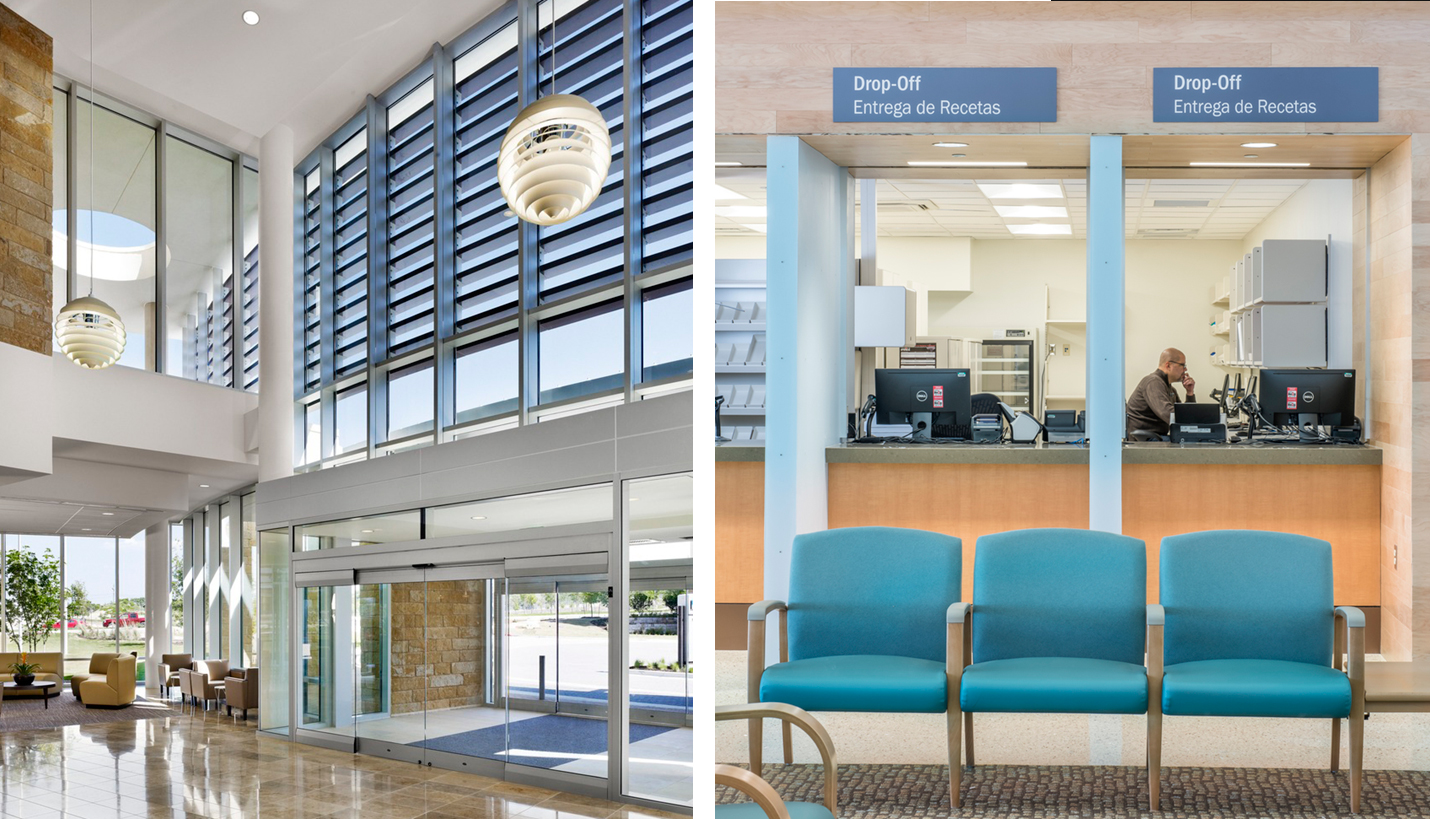Healthcare Facility Trends To Watch Today
Barely a day goes by without a headline trumpeting new reimbursement rules, hospitals converting to outpatient facilities, hospitals going out of business, CEOs being replaced, people going to jail … all related to changes in reimbursement. In an environment where the rules will keep changing and reimbursement shows no signs of settling down, how can good facility design help health care systems and providers succeed?
Kurt Neubek, FAIA, EDAC, CSSBB and Page Principal teamed up with Kelli Falardo, NCIDQ, CID, IIDA and Page Senior Interior Designer to answer some of these questions and provide tips to healthcare facility administrators. As employees of a national architecture, engineering, interiors, planning and consulting firm based in Denver for more than a decade, Kurt and Kelli have worked with health care providers, large and small, across Colorado and the United States facing these same issues.
They called out some of the top health care facility trends they’re seeing today that healthcare providers may want to consider to help their organizations thrive in the years ahead:
Increase Revenue
Some facility designs promote greater financial success than others. As experienced health care facility designers, we understand that:
• To be financially viable, facilities should be designed to be visible and convenient, reinforce the brand identity, and convey the desired image inside and out. Many health care providers want their facilities to convey words such as: welcoming, caring, friendly, reassuring, easy to navigate, clean, fresh and state of the art. The most successful health care facilities communicate such ideas, increasing patient satisfaction and volume. Do your facilities engender these feelings to passersby, patients and visitors? If not, it may be time for a design refresh.
• Design also can increase revenue by increasing throughput. During the design phase, we use lean planning and simulations to look at factors like room turnaround times and travel distances. By designing layouts with these metrics in mind, getting even one more patient per day through each exam room or each operating room can increase revenue and make an enormous difference to the financial bottom line.
Reduce Costs
Many people think that architects, engineers and designers only focus on construction costs. While that may be true with some firms, experienced health care design firms understand the owner’s cost perspective and can make many recommendations to save money.
• Promote patient and staff safety. Decades of research and reams of evidence show that design matters. For example, private inpatient rooms reduce costly infections and can reduce length of stay. Bathroom configurations requiring fewer turns reduce falls. Standardizing aspects of the facility can help reduce costly medical errors. Ceiling lifts can reduce staff injuries and therefore workers’ compensation claims. These design strategies, and many more, impact the bottom line.
• Reduce personnel costs. Personnel costs are the largest cost in almost every business, and health care is no exception. Therefore, designing facilities to be staff-efficient should be a key goal identified prior to beginning design, and each design option should be evaluated on the cost of the staff required to operate it across all shifts. You may be surprised at the annual savings that one design can promote compared to other designs.
Nearly every health care provider has a goal to recruit and retain the best people, and facilities can have an impact. Workers appreciate layouts that promote safe, efficient work and having off-stage areas with views of nature. We can use interior design to be intentionally vibrant and energetic, or peaceful and calming. A recent post-occupancy evaluation of one of our inpatient units showed the new unit had lower staff turnover than an equivalent unit.
• Reduce facility operating costs. It is all too easy, during preconstruction or early construction, to “value engineer” a building to reduce the initial construction cost. But too often reducing initial costs leads to increasing long-term operating costs, particularly in the mechanical systems. Working with the owner’s facility personnel, engineers can help evaluate the initial costs and facility operating costs of proposed options so owners can make better-informed decisions about proposed “savings.”
Commissioning is a process to confirm that the building, as built, operates as intended, meeting the owner’s project requirements. Without commissioning, people often are surprised at how unidentified problems can lead to a building that is not operating at peak efficiency. For existing buildings, retro-commissioning can identify areas where the building is not operating as intended, allowing corrections to be made and thereby reducing operating costs.
Yet another way that design impacts operating costs relates to renovation costs. Experienced architects, engineers and planners are adept at designing in flexibility, which reduces long-term renovation costs. Many of our clients are staunch supporters of flexibility strategies (such as modular layouts) because they recognize and appreciate the long-term operating cost savings.
• Reducing construction costs. Of course, keeping initial construction costs within budget also is essential. This begins during the programming and planning phases, where we bring lean processes to help streamline flows and reduce waste prior to beginning design. To save both construction and operating costs, it is far more effective to eliminate unnecessary square feet than to make the building larger than necessary while resorting to cheaper systems and finishes with shorter lifespans.
There are many more trends that Kurt and Kelli are seeing across the country, but these are among the most significant facility strategies impacting the bottom line.
This content was also published in the Colorado Real Estate Journal (CREJ) Health Care Properties Quarterly publication in April 2019. To view it on the CREJ website, click here.
Kurt Neubek is widely known for his expertise in programming, planning and managing complex healthcare projects. He received the coveted designation of Fellow in the American Institute of Architects when he was only 42. That honor made him one of the youngest members of the College of Fellows, sometimes called the Architects’ Hall of Fame. At Page, Kurt has led projects and studies for numerous healthcare clients around the world and across a broad range of project types including clinics, freestanding emergency centers, greenfield hospital campuses, and senior living facilities.
Kelli Falardo is a healthcare interior designer whose portfolio includes many national healthcare projects throughout Texas, the Midwest, Denver and the Rocky Mountain region, including rural and behavioral health facilities. At Page, Kelly contributes to the advancement of the Interiors practice group, as well as strengthening the Denver office’s Healthcare market sector. She approaches design by evaluating the interior and the architecture holistically so both may be integrated, each influencing the other. Her work is driven by an understanding of how people interact within an interior space as well as how a space can impact a person’s experience within a building.
05/06/2019











